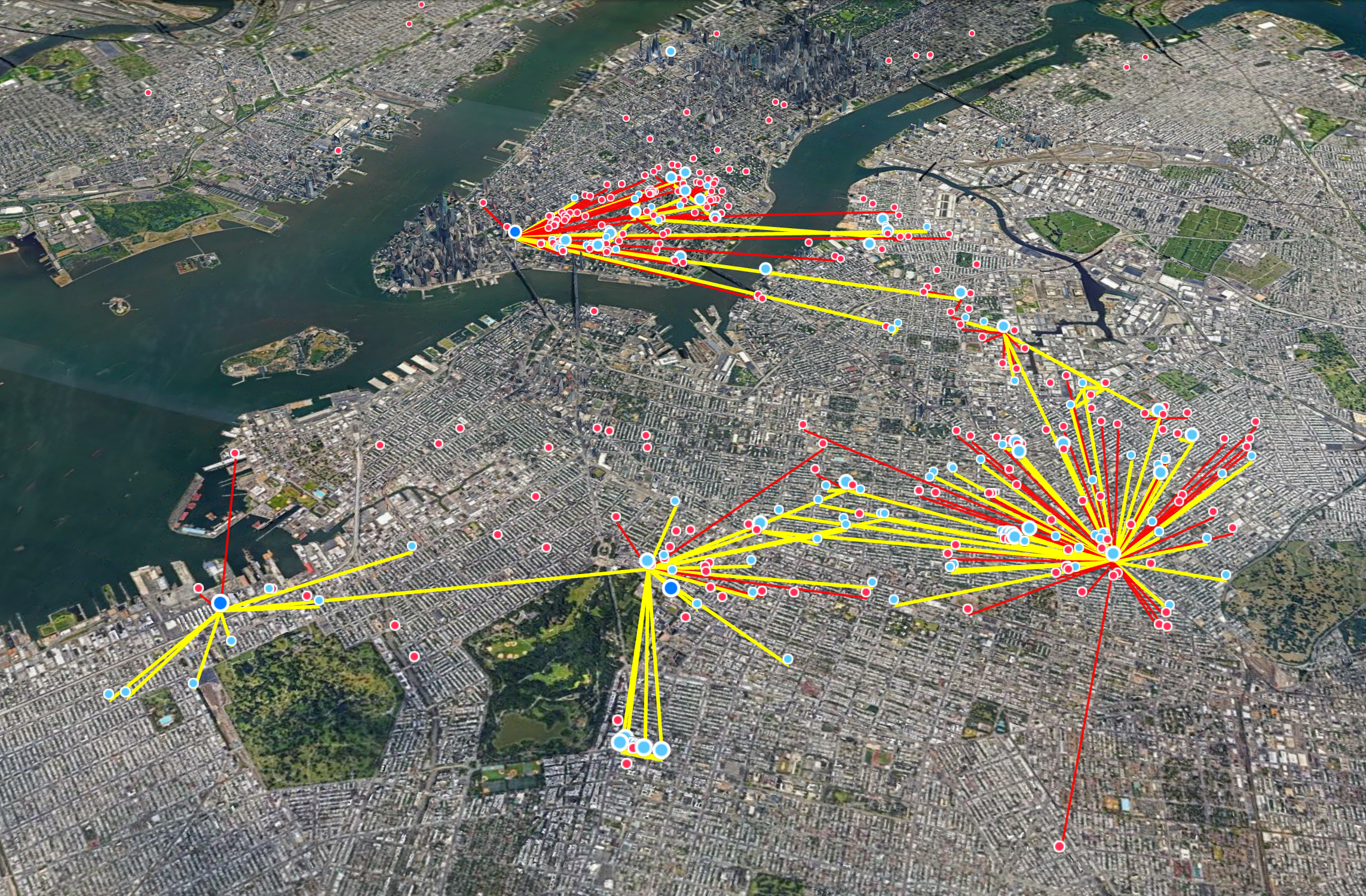I am old enough and geek enough to be bothered by the use of the word “WiFi” instead of the Internet or just network.
It’s only WiFi if you connect the wireless router at the end.
Edit: just noticed mention of the “antenna at the roof” on the page, but I still don’t think it’s WiFi, “WiFi” is a name of the technology that allows wireless access by multiple devices. I think it’s rather radio communication between the router and the access point. They basically use radio waves instead of the cable, it was often used in rural areas in my country, where putting cables would be too expensive.
Same here and when people refer to the PC tower as the CPU
That I cut a bit of slack for, because prior to the minicomputer let alone the microcomputer, the CPU would likely have been a large component like the whole system is for a desktop PC.
I didn’t know that’s even a thing.
It was a thing moreso in the '90s.
I was using computers in the '90s. Guess it just wasn’t ubiquitous.
I heard it in computer labs a lot at school. The “CPU tower”.
I hope they are aware of https://freifunk.net/ and don’t start from scratch completely. They’ve been doing that kinda stuff for over a decade and have developed a modified OpenWRT version and maintain lists of compatible routers
I see freifunk networks more rarely nowadays. They also are notoriously slow. Usually the mobile phone network is faster, even in Germany.
NYC Mesh has been around for more than a decade. I assume they talked to other similar projects when building it.
Getting ready to drop some raspberry pi OpenWRT WiFi 7 with WiFi HaLow around westchester to downtown. Let me know needed areas!
This is fucking awesome
How long until the cities’ PDs start busting down peoples doors for this?
Okay I read the explanation on their faq page but I’m still kinda confused on how this works. Don’t they need like satellites for internet access? What exactly is this in simple terms? Like it seems good, I just want to understand it
You don’t need satellites, just some connection on a datacenter (like but internet in bulk, maybe they have some special deal and is free or very cheap). But this is the boring part, the fun part is that you can connect to the hubs (light blue dots in the map) with a router with an antenna or you can connect to another router (red dots). The network is like a living being that keeps expanding. Then to go out to the Internet, the packets are jumping as they can between neighbors (they have a way to know the path) until they reach the datacenter. It looks like you only have to pay for the initial equipment (plus some donations to maintain the network), but it will probably end up costing you some of your time maintaining the network, learning and helping other people in the network.
I think I get it now! Thank you for explaining!
This seems like a bad idea.
What sort of protections are in place against nefarious actors that gain access to this network? Do they do anything to isolate each connected device from each other so that two devices on the network cannot connect to each other, such as making use of subnets? Are users connections throttled, and if so, to what degree? Are certain websites blocked to prevent potential malicious actors from intercepting sensitive data more easily, such as bank sites?
I mean, the idea is a well intentioned one, but I can easily see this going very wrong very quickly.
Me: Expresses concern about potential cybersecurity issues with a free publicly joinable network
Lemmy: Furiously downvoting
Honestly, I am not sure what I was expecting, but it was clearly too much.
Why would you not use TLS to connect to sites on a mesh network?
I don’t know, I find people do all sorts of stuff with their networks all the time that has me scratching my head trying to figure out why they set it that way when I am eventually called to fix it.
that makes sense
but in this case, the bank, or whatever good site, would probably not even allow non-TLS connections
and if the mesh necessitates TLS only on an exit node*. Then yeah, that’s a stupid and flawed network. And it also wouldn’t be transparent (in the sense of using just like a normal ISP)
*I’m not sure how it connects to the rest of the internet, but assuming there are exit nodes that connect to other networks
Can they start building affordable housing and go around the manipulated housing market?
“I am the CLT Commander!”
So no Internet when it rains?
Sorry but this idea strikes me as it’s just not gonna work.Like I don’t even get it - NYC probably has many competing internet providers.
What stops working when it rains?
It’s all wireless isn’t it
Yeah but that doesn’t stop working when it rains
Does anyone know what other cities are building similar networks? Or how to get started doing it in your city?
I reached out to the NYC mesh folks and they are going to walk me through it. It seems like a lot of work. But the more people who can get to help. The stronger it becomes.
I think European has a head start on this. Not sure which US cities are doing it
KPUD in Kitsap County, WA does something similar: https://www.kpud.org/fiber-internet/free-public-wi-fi/
They also have very affordable public fiber.
Anyone remember ricochet wireless? That was awesome. It can happen again! Why not?
I was just thinking about ricochet while perusing the thread. Ricochet was new when I was starting in IT and I can still remember connecting a ricochet modem to a company laptop and then pulling up our novell netware file share over our vpn. It was jaw dropping to see it at the time. Amazing how far we’ve come since then.
Way way long ago I remember when I lived in Portland that they tried this, it was a pilot program. Idk if it’s true or propaganda but it didn’t work out because it was slow down because of how much porn people where downloading, so they didn’t expand it and just stoped doing it.
wow that’s alotta porn to slow down a 10Gb connection
Packet shaping.
Cue lawsuits from ISPs in 3, 2, 1…
Time to go cyberpunk. Hidden routers using stolen electricity.
Removed by mod











